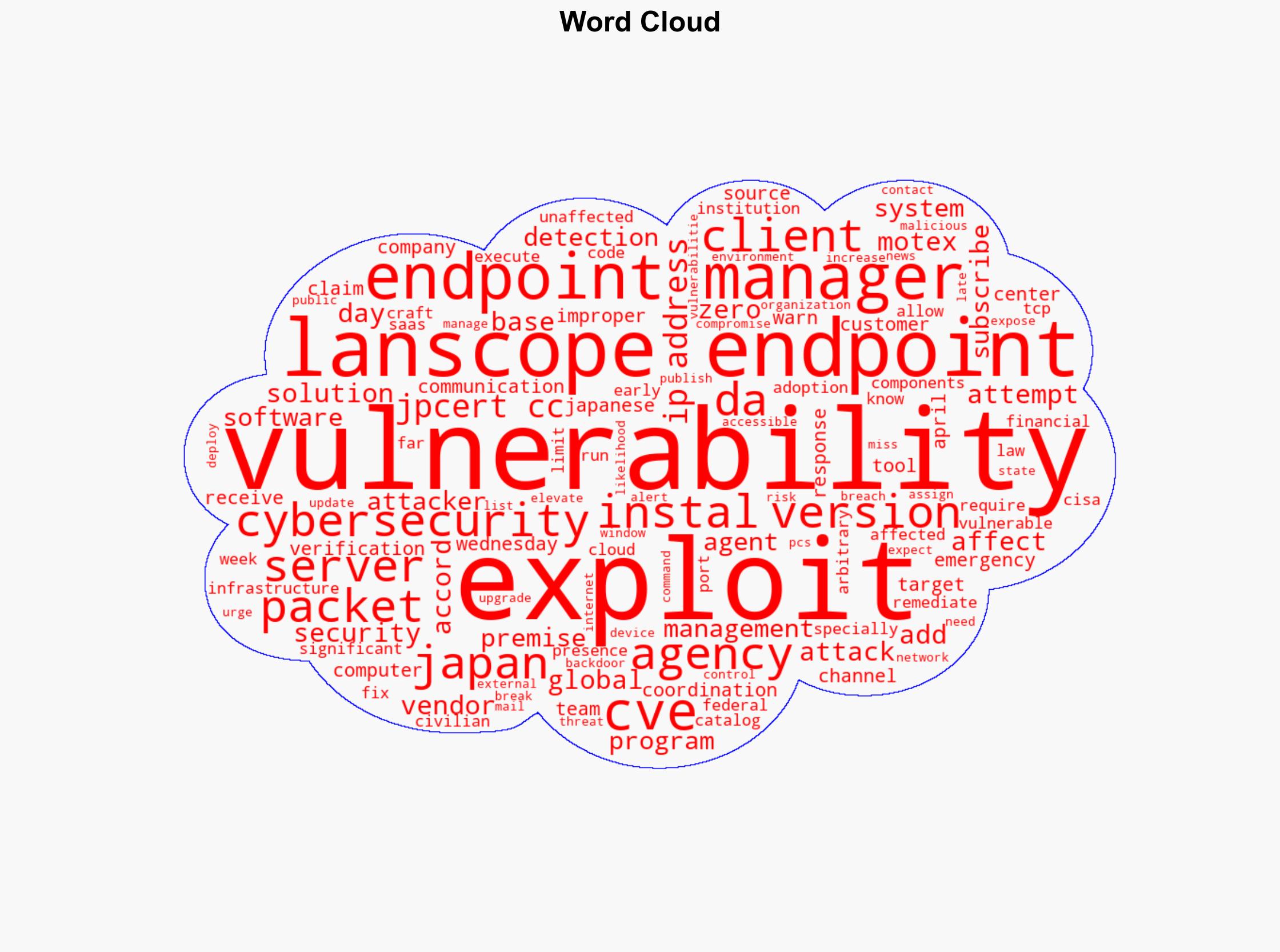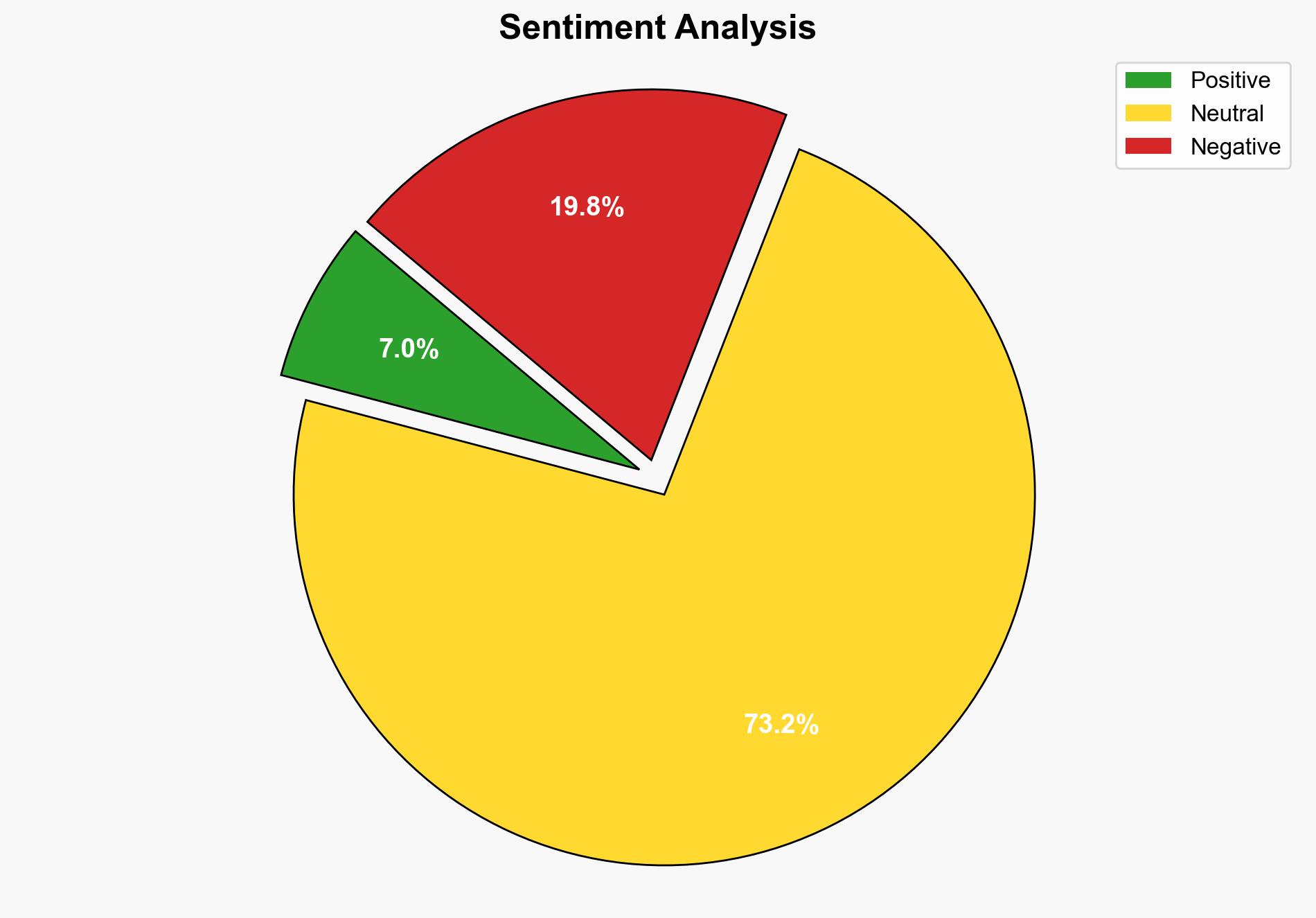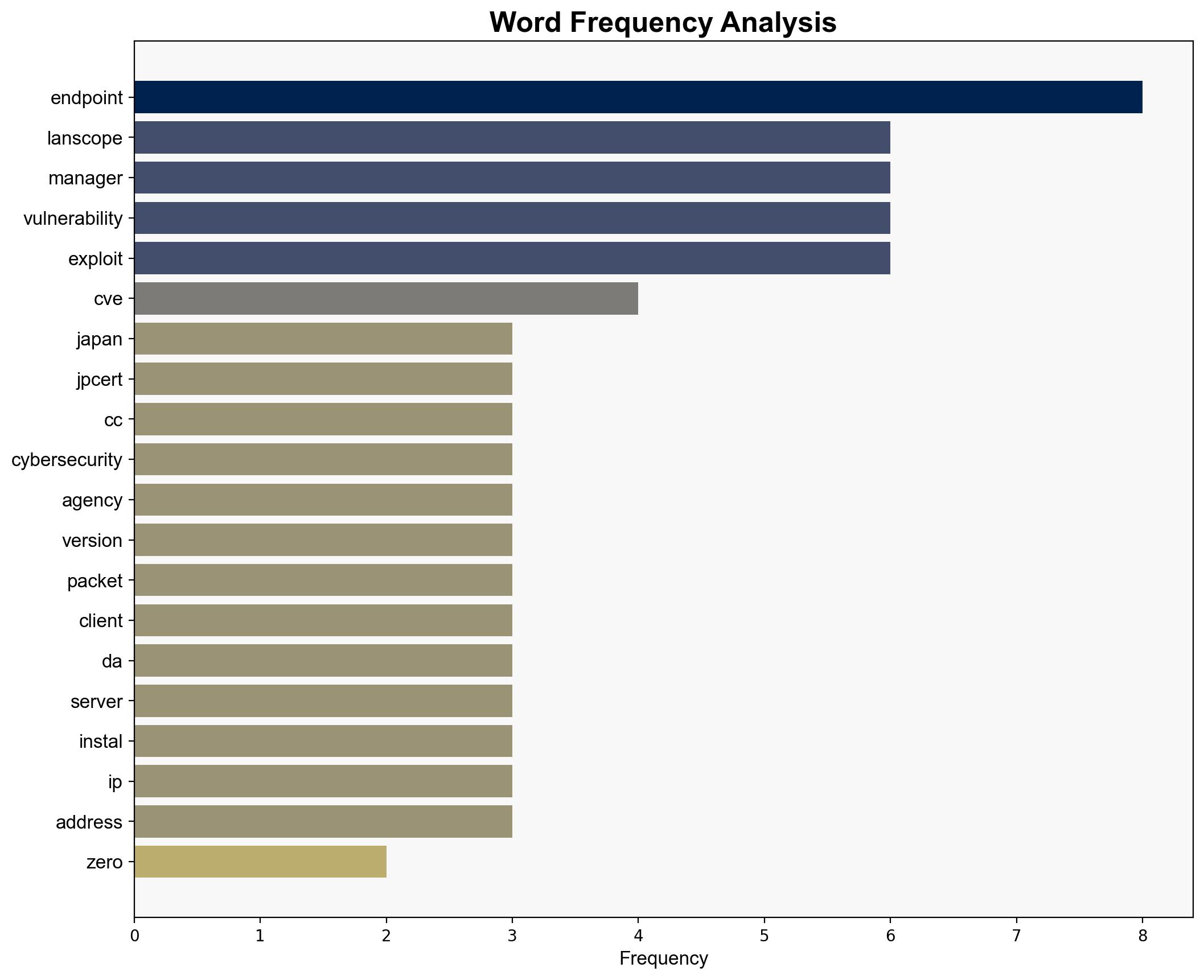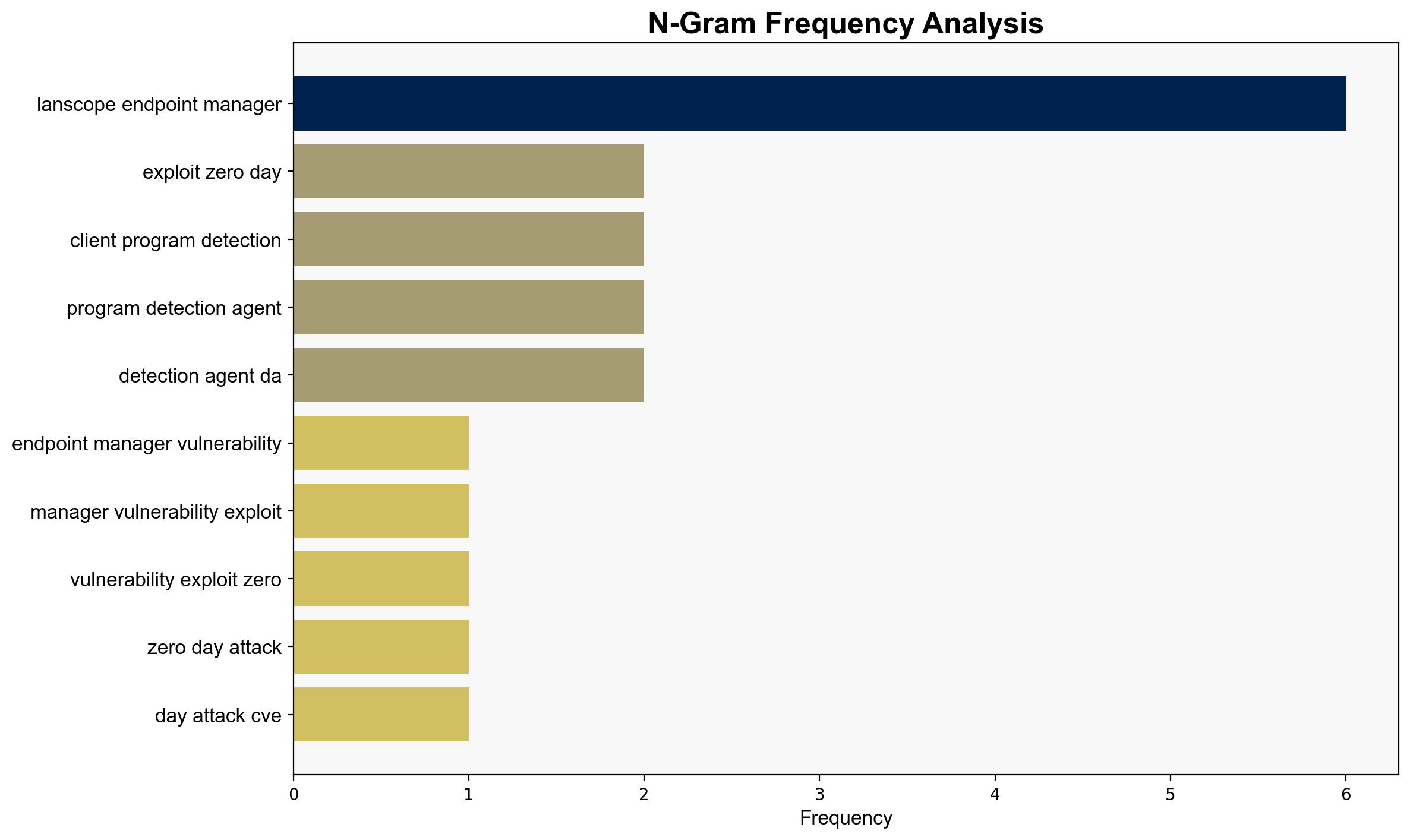Lanscope Endpoint Manager vulnerability exploited in zero-day attacks CVE-2025-61932 – Help Net Security
Published on: 2025-10-23
Intelligence Report: Lanscope Endpoint Manager vulnerability exploited in zero-day attacks CVE-2025-61932 – Help Net Security
1. BLUF (Bottom Line Up Front)
The Lanscope Endpoint Manager vulnerability (CVE-2025-61932) presents a significant cybersecurity threat, particularly to Japanese financial institutions and potentially global entities. The most supported hypothesis is that the vulnerability is being actively exploited by sophisticated threat actors targeting critical infrastructure. Confidence level: High. Recommended action: Immediate patching of affected systems and enhanced monitoring of network traffic for signs of exploitation.
2. Competing Hypotheses
Hypothesis 1: The vulnerability is being exploited by state-sponsored actors aiming to disrupt financial institutions in Japan and gather intelligence. This hypothesis is supported by the targeted nature of the attacks and the specific focus on Japanese entities.
Hypothesis 2: The exploitation is being conducted by cybercriminal groups seeking financial gain through ransomware or data theft. This is supported by the global presence of Lanscope’s client base and the potential for financial exploitation.
3. Key Assumptions and Red Flags
– Assumption 1: The vulnerability is primarily affecting Japanese institutions due to Lanscope’s market penetration in Japan.
– Assumption 2: The zero-day nature of the exploit suggests a high level of sophistication, implying state-sponsored involvement.
– Red Flag: Lack of detailed attribution to specific threat actors raises uncertainty about the true nature and origin of the attacks.
– Blind Spot: Potential underestimation of the vulnerability’s impact on non-Japanese entities due to global client presence.
4. Implications and Strategic Risks
– Economic: Disruption to financial institutions could lead to significant economic instability in Japan.
– Cyber: Increased likelihood of similar vulnerabilities being exploited in other widely-used software.
– Geopolitical: Potential escalation of tensions if state-sponsored involvement is confirmed.
– Psychological: Erosion of trust in cybersecurity measures among affected organizations.
5. Recommendations and Outlook
- Immediate patching of affected systems and deployment of security updates.
- Enhanced network monitoring and anomaly detection to identify exploitation attempts.
- Scenario Projections:
- Best Case: Rapid patch deployment mitigates threat with minimal disruption.
- Worst Case: Widespread exploitation leads to significant financial and reputational damage.
- Most Likely: Continued targeted attacks with gradual containment as patches are applied.
6. Key Individuals and Entities
– Motex (Vendor)
– Japan Computer Emergency Response Team Coordination Center (JPCERT/CC)
– Cybersecurity and Infrastructure Security Agency (CISA)
7. Thematic Tags
national security threats, cybersecurity, counter-terrorism, regional focus





